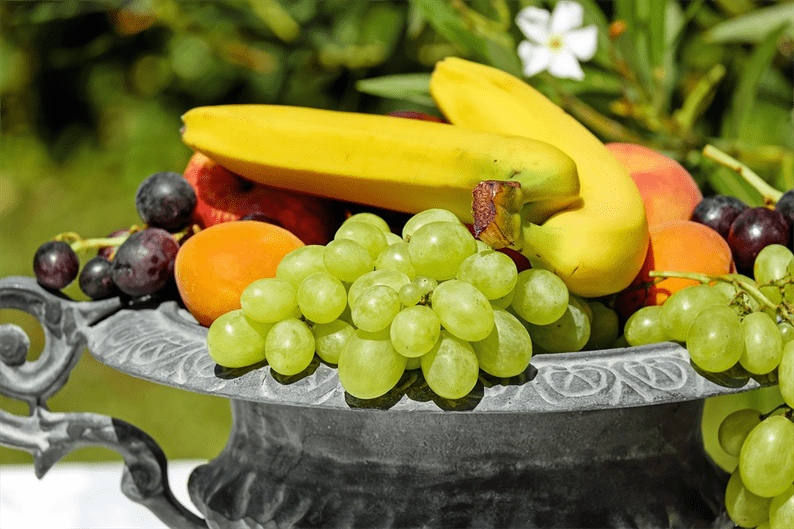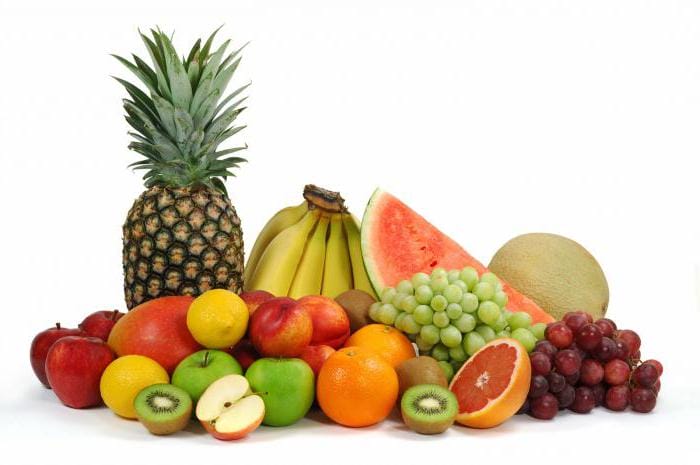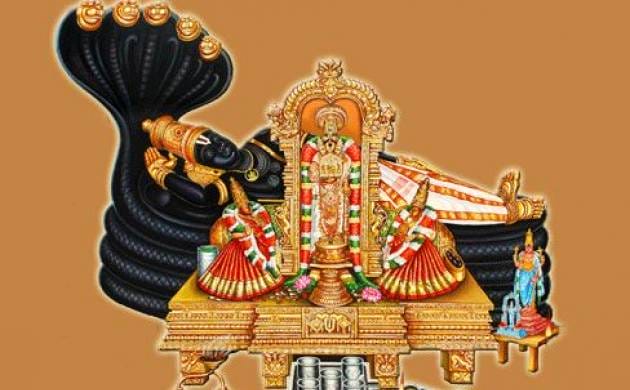What is Ekadashi?
The lunar day of asceticism, falling on the eleventh day from the new moon and full moon, on which a person adhering to this tradition deliberately refuses food and devotes himself to spiritual practices: reading Vedic literature (for example, Bhagavad Gita), meditation, singing kirtans for glory Krishna, charitable activities for the benefit of the universe. At the same time, trying to work on their self-improvement, referring to the knowledge of great people. The days of Ekadashi in July are considered to be especially strong – after all, it was in this month, according to legend, that Krishna was born.
“Eka” translated from Sanskrit, the main spiritual language of all people professing Hinduism or Sanatana-dharma, means “the eternal path.” “Dashi” is the feminine form of the number “ten”, that is, “Ekadashi” literally means eleven. Namely, the 11th lunar day, of which there are two in an ordinary solar month. The lunar month is three days shorter than the solar month, therefore the days of Ekadashi are constantly shifting and are regularly calculated by Hindu astrologers.
History of origin
According to legend, the goddess appeared in the form of a girl clothed with light in the midst of a thousand-year war between Lord Sri Hari and the demon king Mura. Sri Hari was completely exhausted and took refuge in the Badarikashram cave to recuperate. An angry Ekadashi emerged from his body like lightning, challenged the monster, destroyed his weapon, the chariot, and finally blew off the head of the monster itself. It happened on the 11th day of the waning moon. In gratitude to her, the gods were given the power to deliver from the most serious sins all who fast on this day.
The Relevance of Ekadashi
Ekadashi has a very high relevance today, moreover, it is increasing every day. This is due to the fact that the modern ecosystem and the lifestyle of a modern person are so disharmonious that they easily lead to a variety of complications both at the physiological and mental levels. And medical fasting in the hands of modern medicine is successfully used not only for the treatment and prevention of diseases, but also allows you to increase efficiency and promotes rejuvenation of the body.
The miraculous secret of such an effect of therapeutic fasting is that fasting forces the body to turn on reserve forces and direct them to restore the natural metabolism, while simultaneously removing toxins, toxins and metabolic end products from the body. This applies primarily to pathological deposits and formations, for example, deposits of salts, cellulite, toxic metabolic products, etc. Being freed from toxins, the body switches to endogenous (internal) nutrition due to the destruction of its own fats, carbohydrates and proteins.
The benefits and dangers of dry fasting
Supporters of Ekadashi and other types of curative fasting assert: Hippocrates used to heal with hunger; fasting is in all religions; the great wisdom of the ancestors is hidden in abstinence.
It is believed that Ekadashi can relieve symptoms of diseases such as asthma, allergies, hypertension, stomach and intestinal diseases, diabetes, and others.
The main argument is this: without receiving nutrition from the outside, the body switches to internal nutrition due to the destruction of its own fats, carbohydrates and proteins. At the same time, the body is cleansed of toxins and toxins. Thanks to which the cells are healed, the person feels an influx of vigor.
He argues that the idea of the existence of so-called slags in the human body is unscientific. There are no studies that reliably prove that the body needs help to remove waste products. What’s more, Dr. Rosenfeld believes fasting can weaken the immune system, disrupt heart rhythm, and lead to dehydration.
Ekadashi foresees giving up food and water for 24 hours. At the same time, both strict fasting (complete absence of contact with water and food) and more gentle fasting (partial fasting, when drinking and eating are allowed once a day is possible). The teachings say that one who fasts completely receives the “reward” in full, while one who eats naktu (supper) receives only half. However, it is important to remember that water loss that causes a 10–20% loss in body weight is life-threatening. Doctors urge to refrain from dry fasting in hot weather, as well as during significant physical exertion.
Ekadashi followers admit that the first few fasts can have side effects:
- dizziness;
- nausea;
- headache;
- violation of the heart rhythm;
- lowering blood pressure and others.
But it is believed that this is a natural reaction of the body, which is reconstructed to fight toxins. If you practice Ekadashi regularly, these symptoms will disappear.
Doctors say that dry fasting can lead to complications of urolithiasis and gout, and in the long term – to liver and kidney problems. In addition, there are diseases in which doctors categorically forbid fasting, especially without water. Among them:
- tuberculosis;
- diseases of the heart and blood circulation;
- thrombophlebitis;
- underweight;
- malignant tumors.
Post ekdashi – features and contraindications
There are two ways to fast – strict and gentle. The strict method involves a complete refusal to eat and drink during the day. The gentle approach is partial fasting – you can eat once a day. According to Hindu teachings, the level of purification depends on the strictness of fasting.
Completely giving up food for 24 hours is difficult enough for an unaccustomed organism. The main danger is dehydration, which can be fatal. Therefore, it is recommended to proceed to Ekadashi in a gentle way. Initially, fasting can cause the following health problems:
- dizziness and headache;
- nausea;
- violation of the heart rhythm;
- lowering blood pressure.
Dry fasting is an extreme and far from safe practice, which has a number of contraindications. In the long term, this diet can cause liver and kidney damage.
Diseases in the presence of which fasting Ekadashi is contraindicated:
- tuberculosis;
- thrombophlebitis;
- underweight;
- heart diseases;
- gastrointestinal diseases;
- diabetes;
- children under 12 years of age;
- oncology.
Important
Fasting is also contraindicated in pregnant and lactating women. Ekadashi should be practiced with caution when taking strong medicines.
Why observe Ekadashi?
The Vedas claim that these days are the most beloved days of God and those who devote them not to their material desires, but to increasing the level of spirituality in themselves, and therefore the entire Universe.
On the days of Ekadashi, all karmic “tails” (atonement for sins in Christianity) are burned much faster. They are ideal for raising the sattvic (blissful, pleasing to God) level of being and help a person to find peace of mind, spiritual strength and wisdom of consciousness. When one comprehends the depth of the teachings, it becomes clear what the essence of Ekadashi is: the intention to become spiritually higher and worship God for this opportunity.
How was the first day of fasting
Got up at 4 am. It is warmly recommended to practice spiritually on Ekadashi, but for some reason the morning meditation did not work out. It happens: she sat in a lotus, but a huge beetle flew in from somewhere. I had to get up and try to kick him out. but he hid in the darkness with lightning speed. Turning on the light, the arthropod was never found. But as soon as you return to Padmasana and comfortably wrap yourself in a thin sheet – in Cambodia there are always at least a couple of mosquitoes around you – a giant insect flew out and painfully cracked chitin on your forehead.
After all these misadventures, she waved her hand, stretched a little on the rug, practiced her sad Mayurasana, warming up her tummy for some reason – no food was expected. And zhahnuv her supposed half-liter of morning water calmly sat down at the keyboard.
During the day, I calmly cooked morning porridge for the household, then kichri, which for the most part was treated to the neighbors. By the way, the faithful, by the way, today did not begin to share asceticism with me – too active physical labor was coming at work, and we still do not have the habit of such self-restraint.
I also rode a bike with Viktoralekseich, made a couple of working texts, washed something there. In general, the most ordinary day on which I did not manage to sit in spiritual practices, because of more earthly duties, the trumpet sounds too inviting for me from day to day.
There was no food at all until 5 pm. There was a lot of water: I usually drink two liters a day, but here I gushed even more. But in the evening, having started to cook for others, nevertheless, the voracious soul could not bear it (or rather, the soul did not care, but the body with its habits is every day – ah-ah-ah), and on the machine casually bungled kakri raita – such an Indian liquid a salad of chopped cucumbers, yogurt and a mass of spices. One hundred grams of it was enough to “overeat” – that was exactly the feeling.
And three hours later, she slightly violated the concept when the Brazilian Flavio, not wanting to leave “dear Marina” without a treat (we were visiting our Brazilian friends in the evening) pressed a mango on me and formed a shake of water, ice and pulp. Another 200 grams. Real Vaishnavas will say now, probably, that I have succeeded in pampering, and not Ekadashi, or something like that. To which, in response, I will utter a profound “Be-be-be” and will continue to calmly deal with my life. What would I advise and say something like this to a real Vaishnava
Calm deep sleep. As, however, almost always. Morning. The bumpy stomach takes quite a bit of yesterday’s kichari. But in the usual state of aggregation, I would certainly crack two plates, because this is one of my favorite Indian rags!
Nota Bene: note that the exit was not the most competent way, because in kichari there is rice and dal. Those. This is not necessary, and I will prepare more thoroughly for the next Ekadashi, which will already be on the growing moon on April 7, 2017. Because I actually liked it extremely.
- Not eating all day, it turns out, is not at all difficult.
Yes, even if I am not too hard on myself, because I am not at all a supporter of masochism in the transition to vegetarianism, for example. For I do not consider spirituality through violence against oneself to be a competent and reasonable approach. But the first 13 hours without food were still easy. Despite even active physical and mental work. It seemed to me that the task would be much more difficult. - The mind becomes very clear.
In the morning fresh calm ideas come, inspiration intensifies and the desire to work in all directions – too. - There is a pleasant lightness in the body.
The tummy shrinks. The accumulated heaviness from all kinds of pieces of undigested food (and almost everyone has them, believe me, my gluttonous friend) decreases. You want to eat less, and this feeling is rather pleasant.
Here’s how to lose weight, comrades!
No wonder, after all, all sorts of Madonnas and Larissa Dolina regularly spend fasting days and, in my opinion, look much better than the average dull aunts. Which by the time they are forty are pretty dull.
It is not necessary to be in awe of the name of Krishna to try to observe this sweet tradition, in my opinion. Although, of course, for people who are open to the knowledge stored in India, the days of Ekadashi are special, sacred days.
And I tried. And I liked it. Just enough to try to instill this tradition as one of the healthy habits. And hygiene procedures for the mind.
This uncle is clearly more serious than me.
How to get the best result from asceticism
To receive full spiritual blessing while observing this tradition, one should not sleep during the day, shave, rub with oils, do not eat from plates and cups made of bronze, do not touch the female sex during menstruation, and avoid gatherings with alcohol.
What is the essence of Ekadashi? In ancient teachings, the main result of fasting is spiritual cleansing. That is, a person, with the help of giving up the pleasure of eating, becomes closer to the divine, and also becomes more enlightened. It is believed that heavenly forces become closer to an enlightened person in a spiritual sense, while observing this ancient tradition.
How to properly come out of Ekadashi
Similar to how they entered. See the seven-level fasting table. If you abstained from meat, then after 24 hours, after sunrise the next day after the new moon / full moon, you can afford this type of food. Or you can try to gradually conceive and switch to vegetarianism.
Don’t eat grains and legumes – go out with them. If you survived the highest level of fasting and starved dry, start with 0.5 liters of water with a pinch of salt dissolved in it to taste. You can add a few drops of lemon juice.
After a while, taste fruits or vegetables, juice from them. Don’t rush to throw food into your stomach. In an amicable way, he will not ask her. It is necessary to give the gastrointestinal tract time to awaken from physiological rest. Overeating, which many fasting people fall into, can harm the physical and subtle body.
The day after leaving Ekadashi, you should not immediately switch to the usual regimen of food intake, it is better to stick to light sattvic food whenever you feel like it. Watch yourself, your emotions, so as not to confuse physiological hunger with emotional hunger, which modern people are used to eating.
You will see, as soon as you have eaten, the nature of thinking immediately changes. The mind will come out of a self-absorbed and calm state and will start thinking about everyday affairs It is very useful to analyze the past post on an empty stomach: what, in your opinion, was successful. What I would like to do differently.
What food is prohibited on Ekadashi and why?
Meat and fish is understandable, but why mushrooms and crops are banned? After all, most of the practicing Hinduism are vegetarians who do not kill animals for the sake of nourishing the stomach, preferring to eat vegetables, grains and fruits. The Vedas claim that every animal has a soul, just like a person, so killing and eating it is the same as becoming a cannibal, that is, eating your own kind.
Alcohol, nicotine, coffee, chocolate – these substances are prohibited, because they affect the human consciousness: clouding it or, conversely, too stimulating, which means that the clarity and purity of the unconditioned perception of the world is lost.
Legumes and everything that is made of them (bread, porridge, cookies, soy sausage and much more) are prohibited because it is on the 11th lunar day that everything based on grain or legumes leaves the earthly sins of the most diverse quality and properties. Eating these foods, a person absorbs all the material dirt of the world, clogging up his perception.
What else is not eaten on Ekadashi? In July, for example, cottage cheese is not consumed as an amplifier for kapha dosha, which, in turn, stimulates an increase in tamas (laziness). Never: mushrooms – as an inhabitant of a gloomy (intermediate) world, because a mushroom is not a plant, but not an animal either. It is forbidden to eat eggplant, spinach and sea salt. Also, beets, honey and cabbage of all varieties and types, bell peppers are not eaten. Taking medications should also be excluded for this day.
Ekadashi – days of austerity in Hinduism
In the religious Hindu book “Padma Purana” it is said that Vishnu recommended to worship the goddess of the lunar day, Ekadashi, to purify karma. So it was customary in the days of veneration of this goddess to be cleansed from sins, observing certain restrictions in food and actions.
Ekadashi time
In Hinduism and Jainism, fasting is associated with the movement of the moon and occurs on the eleventh day after the full moon and new moon. Thus, these periods are not fixed. Given the movement of the moon and earth, there is a shift in days of the week and numbers. The time for observing Ekadashi is determined according to a special calendar, and is of fundamental importance for believers.
Prohibition system
It is best not to consume food and water at all on these days. Believers should direct their thoughts to the Almighty and analyze their life path.
Those who cannot sustain a full fast are allowed one afternoon meal. However, not everything is so simple here. The main rule is not to eat legumes and grains. If you believe the religious texts, it is in them that personified sin is hidden. One who does not fully observe Ekadashi can donate something to a highly spiritual person and thus purify his karma.
Exit from Ekadashi should be realized with the rising of the sun. That’s when you need to eat legumes or grains. In this case, the fast is considered to be observed.
All adherents of Hinduism over 5 years of age must fast.
Having decided to observe strict (full) fasting, one must understand the following. Refusing food, water, everyday affairs and troubles, a person should strive for a sublime, deep perception of the subtle world. The point of strict fasting is not to endure the refusal from sleep, food, or physical desires. The essence of Ekadashi is self-realization, service to the universe. In no case should you keep a dry fast without fully realizing why this is being done. It is better to spend time studying the information and understanding the essence of this important step towards reaching a new stage of self-improvement. And only after making sure that everything is understood correctly and there is knowledge of the principles of fasting, you can gradually try to observe it.
Benefits of observing Ekadashi
Those who have comprehended the secret of subtle matters believe that the phases of the moon affect the mental health of a person. The 11th lunar day especially affects the spiritual world of a person. Being weak-willed and weak, a person easily succumbs to passions, commits unseemly acts, offends loved ones and thus creates various problems for himself. Being strong, a person withdraws from potential problems and, following the sages, refuses food that has high energy. However, fasting is not just about giving up food. Those who observe Ekadashi withdraw from worldly thoughts and desires and devote themselves to meditation.
With the help of refusal from food, a person is freed from the accumulated load and rushes to the sublime. Without food, the body is weakened and unable to do bad deeds. In a state of starvation, the soul is open for energy exchange, and the mind is open for new knowledge. It is believed that during the Ekadashi fast, prayers directed to God reach him faster. Observance of the fast doubles the energy and wisdom accumulated during the practice. Ekadashi helps to touch subtle matters and get rid of the karmic burden.
reference
However, a hunger strike is good only when it does not harm your health. Fasting is meant to prepare the body for serving the Universe, but not for being on the verge between life and death.
According to Vedic traditions, there are 25 types of Ekadashis, including:
- adja ekadashi;
- pashankusha ekadashi;
- utpanna ekadashi;
- parsva Ekadashi, etc.
Aja Ekadashi, which is held in August-September, was of great importance in the Hindu Puranas. According to the scriptures, observing this fast frees the practitioner from sins and fills his life with joy.
Physical level – body
According to Ashtanga-hridaya-samhita, fasting leads to harmonization of the doshas. From the point of view of Ayurveda, the vacuum in the digestive tract helps to increase the digestive fire. The body gets rid of the unnecessary and harmful, which leads to a harmonious interaction between body and mind. Ekadashi removes toxins and toxins better than any detoxification program. Lightness in the physical body upon completion of Ekadashi restores a healthy appetite.
Subtle level – psyche and karma
The eleventh day carries an increased load on the inner world of a person, increasing his need for the satisfaction of passions. Fasting is a conscious avoidance of temptation in order to maintain harmony. Regular passage of fasts hardens the body and mind, teaches you to gradually give up momentary desires.
Observance of Ekadashi is a way of becoming familiar with the mechanism that underlies the universe. Through fasting, sinful desires at the subtle level are neutralized at the very beginning. However, Ekadashi should not be taken as nullifying karma. At the end of fasting, the karmic law remains the same.
Spiritual level
Fasting during fasting is accompanied by prayers, recitation of mantras, and performing rituals of worship (pūjā). Besides purifying the body, Ekadashi enables one to approach God, which is the supreme goal. The day of purification is filled with peace and focuses on meditation. Worldly affairs and troubles are carried over to other days. All energy on the days of Ekadashi is directed towards perfecting the soul.
How to Begin Ekadashi – Stages of Entering Fasting
How to fast is correct? Ekadashi as a psychophysical practice requires gradual absorption. For starters, it is recommended to give up certain foods.
Completely passing Ekadashi consists of seven stages:
- Muladhar: meat, fish, mushrooms, alcohol, and tobacco are excluded from the diet.
- Svadhisthana: legumes are excluded.
- Manipure: refusal of so-called tamas food. These are canned food, pasteurized milk, cheese, cottage cheese, flour, sweet and fat. Preference is given to vegan and vegetarian foods prepared without harming living beings.
- Anahata: involves one meal in the afternoon (after 4:00 pm). You can satisfy your hunger with nuts and fruits.
- Vishudhe: the diet includes only water throughout the day.
- Anne: complete refusal to eat and drink.
- Shasrare: fasting is accompanied by mantras and prayers instead of sleep.
Ekadashi – harmony of body and spirit
According to the Vedic scriptures, in addition to the above physiological effect, Ekadashi has the ability to cleanse our subtle body from various negative energy clots that appear as a result of committing sinful acts and defilements. Thus, such curative fasting, performed on the day of Ekadashi, is already directed not only at the physical body, but also at the whole person, including all his structures – physiological, energetic and spiritual.
Therefore, fasting therapy performed on Ekadashi day is the first successful step towards a free and pure life, because in this case you will purify and improve your whole self at all levels.
Ekadashi is such a natural and simple method of comprehensively improving one’s life in all areas that humanity will never invent a more efficient and effective way. Observe Ekadashi and live a pure and happy life!
Moon position
The time of each rite of asceticism depends on the position of the satellite of the Earth. The Hindu calendar marks the progression from full moon to new moon, which is divided into fifteen equal arcs. Each arc measures one lunar day, called tithi. The time it takes for a celestial satellite to travel a certain distance is the duration of this period. Ekadashi refers to the eleventh tithi. This period corresponds to the exact phase of the waxing and waning moon.
There are usually twenty-four sacred days per year for spiritual cleansing. Sometimes there may be two extra days in a leap year. Each period of this cycle has special benefits and blessings that come from performing certain activities. Ekadashi in January are called Sat-tila Ekadashi and also Bhaimi Ekadashi.
Ekadashi times vary by time zone
The start and end times of this Indian fast are of immense importance and depend on the time zone of a particular region. Thus, the period of asceticism in India, America and Russia may differ by a whole day. In order to calculate the exact time of entry and exit from asceticism, experts calculate a calendar for certain time zones. There are even specialized devices for calculating its timing.
The physical side of Ekadashi
Medicine does not deny the benefits of one-day dry fasting, provided that the person has no serious contraindications to them.
Strict fasting can be harmful in a number of the following situations:
- acute period of chronic diseases of the digestive system,
- oncology, diabetes mellitus of any type,
- period of immunosuppression,
- pregnancy, lactation in women,
- children under 12 years old,
- advanced age after 65 years (there may be exceptions),
- the presence of psychological disorders and a period of deep depression.
In other cases, fasting is considered a useful measure to cleanse the body of toxins, toxins, and remove the accumulated load. After all, modern products, ecology load the body with negative influences. A short-term refusal to drink and eat will help restore physical lightness, get rid of excess and take the necessary vitality.
However, it is important to remember that observing Ekadashi is not a diet to lose weight or restore health. Observance of this fast presupposes spiritual practice aimed at achieving inner heights and self-development. For other purposes, you should not use this post.
It should also be remembered that observing the special rules of fasting Ekadashi helps to double the positive energies, auspicious knowledge and wisdom accumulated and formed during the practice. However, in order to learn the maximum of the positive aspects of life in this world and deserve the best option for subsequent reincarnation, you should always live according to the principle of harmony with nature, without disturbing this mood for a moment.
Fasting levels
There are different ways to adhere to Vedic fasting, depending on your inner strength, health and desire. The steps below are from simple to more complex. Therefore, if a person decides to observe Ekadashi, and what it is and how it should really be – he does not know, it is recommended to start small and gradually accustom himself to more ascetic levels.
- Do not eat meat, fish and mushrooms, exclude alcohol and smoking.
- Legumes and everything that has them in its composition is prohibited.
- Do not eat a number of foods that these days are considered tamasic, that is, clouding the mind and consciousness.
- Observe one meal. Usually this is a dinner called “nakta”, it falls on the period from 4 pm to sunset.
- Complete refusal of food, only water as needed (recommended once a day in the afternoon).
- Complete refusal to eat and drink for twenty-four hours: from dawn to dawn.
- Refusal from sleep is an all-night vigil dedicated to spiritual practices.
As you can see from the list, the conditions are quite harsh, especially towards the end, but it is not in vain that there are seven of them: like the seven chakras in a person.
Gradually and consciously advancing in pacifying his sensual desires, limiting himself immediately from the coarse, frankly tamasic food (meat, alcohol), which is characteristic of the first lower chakra, a person will grow up to truly spiritual actions of the seventh chakra, showing his love for God by prayers, pujas and other Vedic traditions.
Ekadashi from a scientific point of view
According to scientists and doctors, any abstinence or temporary restriction is extremely beneficial.
The body does not receive energy from the outside and begins to use internal resources, which forces substances to leave the body’s reserves. Thus, metabolism is stimulated, decomposition and removal of harmful deposits, metabolites and toxins occurs.
In addition, all organs and systems are stimulated, thereby activating the immune system, which makes it possible to further resist various pathogens. The heart starts to work more evenly. There is less chance of cramping and developing heart attacks and strokes. The functions of the food glands, liver and pancreas are stabilized. The intestinal bacterial flora is optimized.
As you can see, the possibility of short-term functional unloading subsequently leads to optimal work of the whole organism. However, you should definitely check with your healthcare provider before resorting to any system of restrictions. Sudden or improper entry into fasting, as well as exit from it, can negatively affect a person’s health.
What one can eat on Ekadashi: a list of foods
What kind of foods can be eaten on Ekadashi? All fruits and vegetables are considered blissful food on this day, with a few exceptions. However, it is recommended to avoid beets, and other root vegetables are acceptable for consumption. Dairy products are also good for consumption on this day. Although nuts also contain a highly concentrated protein, they can be consumed on Ekadashi, but if you want to achieve a greater purifying effect, it is better to abstain on this day from any high molecular weight protein such as nuts and dairy products. In addition to grains and legumes, it is also not recommended to consume honey, spinach, eggplant and asafoetida on this day.
The most auspicious food on the day of Ekadashi will be fresh fruits and vegetable salads. On the day of fasting, a powerful cleansing process takes place, and it is not recommended to overload the body with heavy food. Fruits are the easiest food to nourish our body, and vegetables have the function of cleansing, and their consumption will contribute to the process of cleansing the body of toxins and toxins. Vegetable salads can be seasoned with cold-pressed oils. There is an opinion that vegetable oils are not absorbed by themselves, but they break down mucus in the body and promote its excretion. Therefore, if you intend to get the maximum cleansing effect, it is recommended to use vegetable salads on this day. In any case, everything is purely individual and everyone should choose the diet for Ekadashi for himself, taking into account general recommendations, but taking into account his health,
Sources used and useful links on the topic: https://www.syl.ru/article/344004/ekadashi—chto-eto-takoe-i-kak-soblyudat-kalendar-ekadashi https://mymind.yoga/ekadashi.html http://allavoronkova.com/ekadashi/ https://Lifehacker.ru/ekadashi/ https://vegatlas.ru/food/ekadashi-chto-eto-takoe-v-chem-polza-i-kak-pravilno- soblyudat https://martathai.ru/asia/thailand/ekadashi.html https://labuda.blog/202407 https://www.oum.ru/yoga/vedicheskaya-kultura/vykhod-iz-ekadashi/ https: / /FoodandHealth.ru/info/chto-takoe-ekadashi/ https://www.oum.ru/yoga/vedicheskaya-kultura/ekadashi-chem-oni-tak-polezny/ https://www.oum.ru/yoga / pravilnoe-pitanie / chto-mozhno-est-v-ekadashi /







